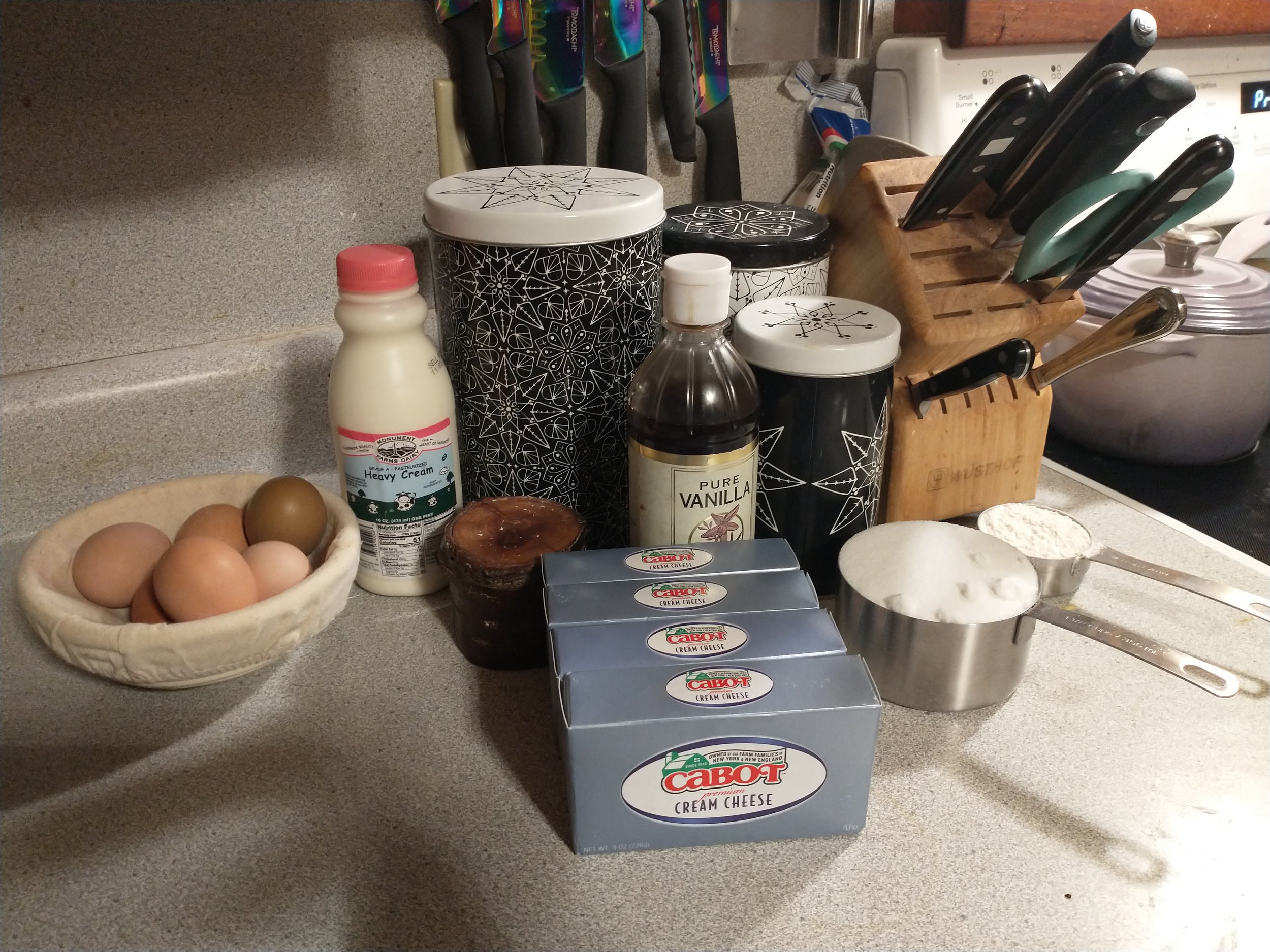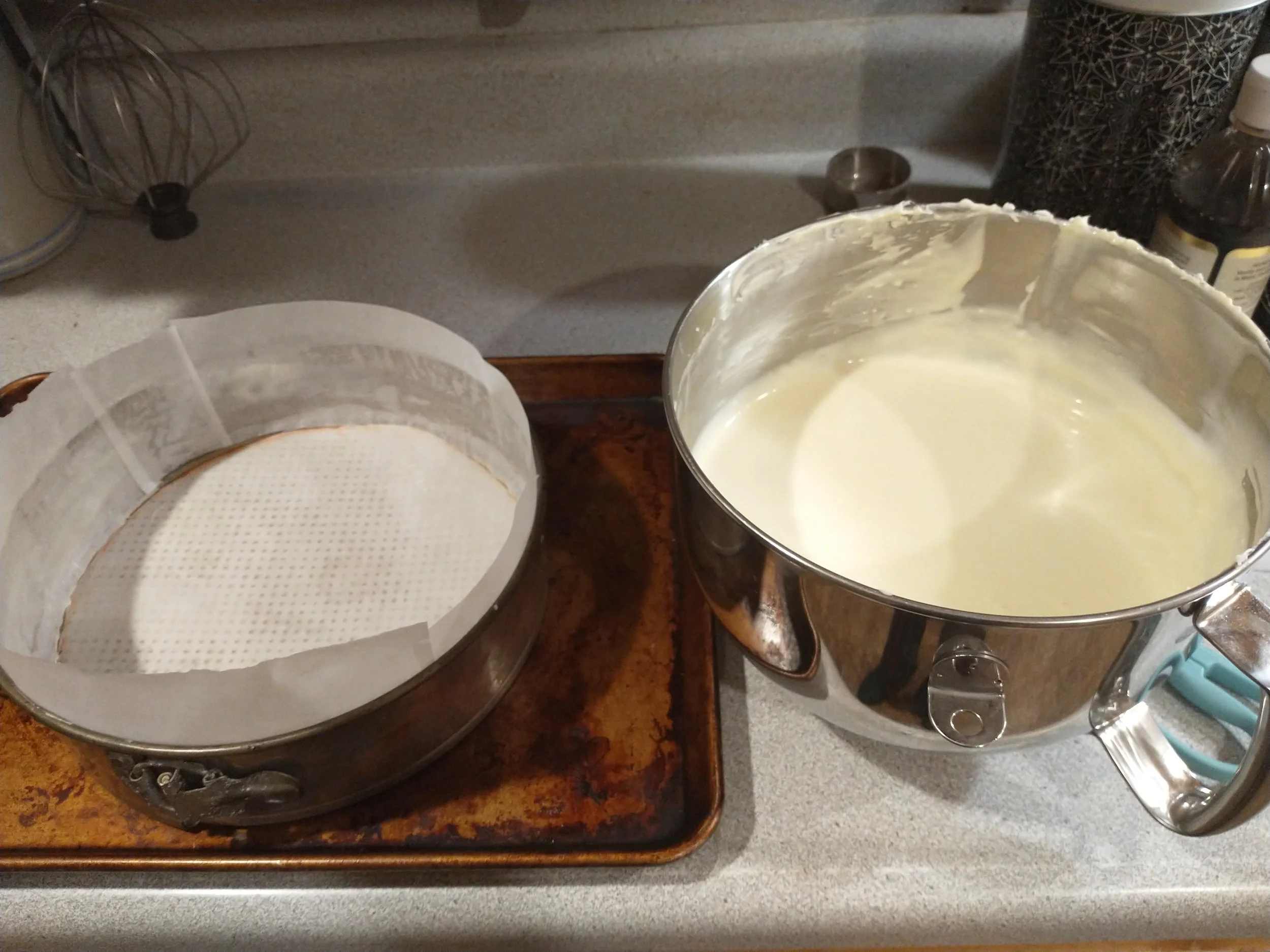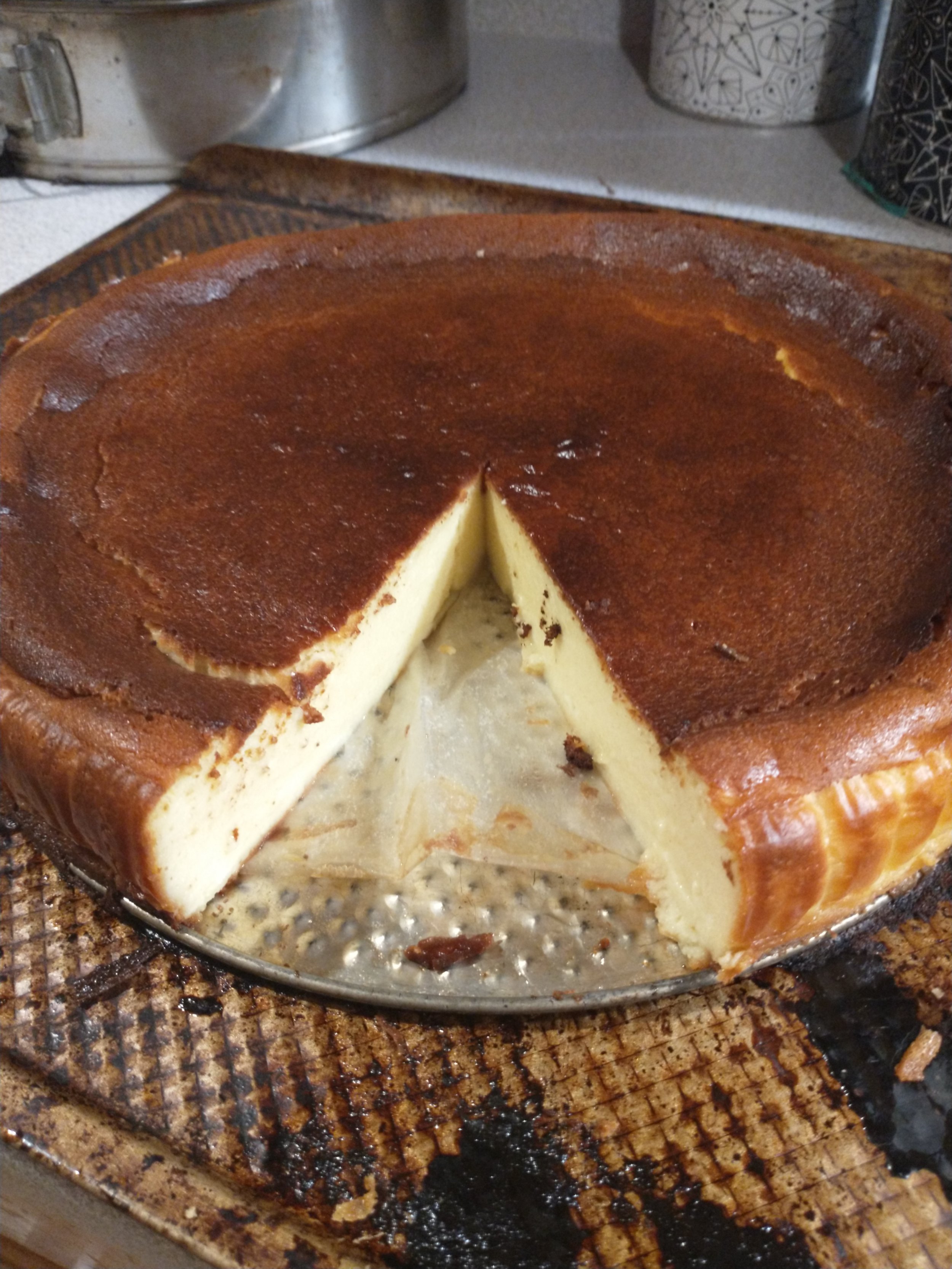Up until a few weeks ago, my knowledge of cheesecakes was nothing short of thinking they came from either New York, or from a particular chain restaurant with cheesecake in the title. I’ve been doing a fair amount of baking moving into the Fall and Early Winter months. Apples have been in season so my attention has been crumbles, cobblers, and cakes. Yet, from some social media presence that I follow a recipe, came an ad for a “full proof” cheesecake. It was enough to make me pause. The cheesecake was nonexistent in my upbringing. My family made an assortment of sheet cakes and fruit pies, but never a cheesecake. To me, this was another or exotic dessert dish.
Without the need to recreate or tap into a bit of childhood nostalgia, I decided to make a go of this claimed easy bake. But alas, I lost the recipe. No worries of course, I found another that fit the bill. I remembered it being called a “burnt basque cheesecake” and there were plenty of recipes online to make up for the one I misplaced. Because of its rustic appearance, I thought the dessert was old. Passed down from a simpler time. That “simpler time” was the 1990s when chef Santiago Rivera of La Viña in San Sebastian, Spain, produced the dish in its most widely recognized form. The term “burnt” lends itself to the caramelization that takes place and, “Basque” speaks to the region of Spain from which it originated.
This recipe comes right from Bon Appétit and I’ve varied little from their instructions. Make sure you have a spring pan (I use a 10” one), some parchment paper, and a stand mixer is a must.
INGREDIENTS
2lbs of cream cheese, 1.5 cups of sugar, 6 large eggs, 2 cups of heavy cream, tsp of kosher salt, tsp of vanilla extract, 1/3 cup of all-purpose flour
Preheat your oven to 400 degrees. Throw your cream cheese and sugar into the stand mixer with a paddle attachment and beat them on a low-medium setting until you have a smooth consistency. Stop a couple of times to scrape down the sides. Next comes the eggs. Bump the mixer speed up to medium and add each egg one at a time every 15 or so seconds. After all are added, scrape down the sides again and continue to mix on low-medium while adding the cream, salt, and vanilla. Beat until silky smooth.
Grab some parchment paper and lay it inside the bottom part of your spring pan. Trace out the section with a pencil/marker and cut out. Either use baking spray or some room temp butter to secure the parchment to the bottom. Next cut a couple of strips that extend a couple of inches above the sides of the pan. Using the baking spray or butter again to hold it, line the pan with the parchment.
I grab a large overlapping baking sheet to place the lined spring pan on. Pour the mixture into the lined spring pan and scrape out the good stuff with a spatula. Carefully set in the middle rack of your oven. I’ve been the most successful in letting this go for about 1 hour.
After an hour, pull your cheesecake out. You might see some cracks on top. That’s fine. You’ll probably notice that the top has risen significantly, no worries, it will settle back down as it cools. Let it cool for at least an hour before slicing. I suggest pulling a “Golden Girls” and eating a piece in the middle of the night.
This burnt basque rendition is airy, light, and almost souffle-like. While this isn’t a southern or Appalachian-inspired dish I’m typically drawn to, this cheesecake does share a rustic quality and aesthetic. With only a handful of ingredients, you don’t need to have a pantry of specialty flour and spices. Spring pans are pretty common for most. The only thing here that wasn’t in my grandmother’s kitchen was a stand mixer. Let’s just name that nice convenience for what it is. Could you do this without one? I think you could, but you’d have to get a bit creative and have a helluva hand mixer!
A slice of cheesecake can help solve a lot of problems.
Chewing the Fat…
I’m not meticulous in how I cut my cheesecakes with some pieces might be slivers while others a hefty slice. I’ll leave it to the “spirit” to guide my knife. This cheesecake was prompted by a few neighbors whose birthdays fell this past week. I heard about them and decided each needed a slice or two. That’s the fun thing about cakes and pies; most folks don’t want or need a whole one. By splitting up this cheesecake, these folks get to share a dish together. Plus, something about an individual slice seems unique to me; reminding me of the small individual pan pizzas I used to get as a kid at Pizza Hut. I didn’t give all the cheesecake away. I always keep a couple of slices for myself and my family. I like to think on those late nights when I’m looking for that small snack that will finally grant me the peace I need before sliding into bed; I find that single slice of cheesecake waiting for me in the fridge. As I stand in the kitchen and savor each bite, perhaps, just perhaps, someone I gave a slice to is doing the same thing. In that way, we're connected. In that way, we experience an expression of what I understand communion with one another to be.
As you were,
~tBSB






